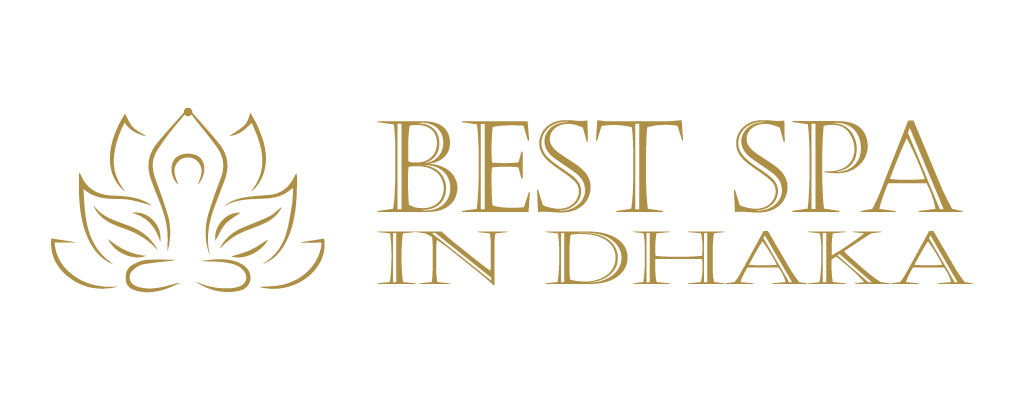
Deep tissue massage is a technique designed to reduce musculoskeletal pain, stiffness, and tension. Unlike lighter massage styles, this method applies sustained pressure using slow, deep strokes to reach the inner layers of muscles and connective tissues. Originally developed to address sports injuries, it has become a widely used method for enhancing recovery, reducing stress, and improving overall physical health.
This massage is particularly effective for conditions like chronic pain, fibromyalgia, and sciatica. By improving circulation and breaking up scar tissue, it promotes natural healing processes.
Physical Benefits
- Pain Relief: Deep tissue massage is highly effective for lessen chronic pain, particularly in the lower back, neck, shoulders, and other problem areas. By applying sustained pressure, it alleviates muscle tension and disrupts pain signals to the brain.
- Improved Mobility and Flexibility: Tight muscles and connective tissues can limit movement. Deep strokes help to stretch and loosen stiff areas, enhancing flexibility and joint mobility.
- Injury Recovery: Recovering from a sports injury or managing a sprain, deep tissue massage can accelerate the healing process. It breaks down scar tissue, enhance blood flow, and reduces inflammation, making it a go-to therapy for athletes and active individuals.
- Better Posture: Muscle imbalances often cause poor posture. Deep tissue massage realigns tissues and muscles, encouraging better spinal alignment and body mechanics.
Psychological Benefits
- Stress Reduction: Deep tissue massage also has mental health benefits. It triggers the body’s relaxation response, helping to lessen stress hormones like cortisol and promote a sense of calm.
- Improved Sleep: Chronic pain and stress can interfere with sleep patterns. By reducing discomfort and promoting relaxation, deep tissue massage often leads to better, more restful sleep.
- Enhanced Mental Clarity: Reduced pain and tension can improve focus, energy levels, and overall cognitive function. Many people feel revitalized and refreshed after a session.
Treatment of Specific Conditions
Deep tissue massage is often recommended for various chronic conditions and injuries:
- Fibromyalgia: This massage style can ease widespread muscle pain associated with fibromyalgia, improving quality of life for individuals with this condition.
- Plantar Fasciitis: Targeting the connective tissue at the bottom of the foot, deep tissue massage helps relieve pain and inflammation from plantar fasciitis.
- High Blood Pressure: Research indicates that regular sessions can lower blood pressure by reducing stress levels and improving circulation.
- Sciatica: By addressing tight muscles that compress the sciatic nerve, deep tissue massage helps alleviate radiating pain and numbness.
- Tennis Elbow: This therapy breaks down adhesions and promotes healing, making it effective for treating repetitive strain injuries like tennis elbow.
Enhanced Circulation
Deep strokes encourage better blood flow, which enhance oxygen and nutrients to the muscles and tissues. Improved circulation:
- Speeds up the healing process for injuries.
- Removes toxins and metabolic waste more effectively.
- Enhances skin health and tone.
Management of Scar Tissue and Adhesions
After surgeries or injuries, scar tissue can form and limit mobility. Deep tissue massage helps break down these adhesions, restoring normal function and flexibility.
Stress Hormone Regulation
During a session, the body releases endorphins—natural “feel-good” chemicals that boost mood and counteract pain. The reduction in stress hormones leads to a calmer and more balanced mental state.
Support for Athletes
Athletes often rely on deep tissue massage for:
- Prevention of Injuries: Regular sessions keep muscles loose and flexible, reducing the risk of tears and strains.
- Performance Enhancement: Improved circulation and muscle recovery allow athletes to train more effectively.
- Post-Workout Recovery: This massage reduces muscle soreness and speeds up recovery after intense training or competitions.
Improved Lymphatic Drainage
Deep tissue massage stimulates the lymphatic system, aiding in the removal of toxins and waste. This contributes to a healthier immune system and overall well-being.
Who Can Benefit?
Deep tissue massage is perfect for people who:
- Engage in physical activities like sports or heavy lifting.
- Suffer from chronic pain conditions.
- Need recovery support after an injury or surgery.
- Want to improve my posture and mobility.
Swedish Massage vs. Deep Tissue Massage
While both massages are popular, they differ significantly in technique and application:
Feature Swedish Massage Deep Tissue Massage
Pressure Light to medium pressure Intense, targeted pressure
Purpose Relaxation and stress relief Treating pain and stiffness
Techniques Long, gentle strokes Firm, deep kneading
Best For Beginners, relaxation seekers Athletes, individuals with injuries
For individuals seeking a therapeutic experience that targets specific problem areas. Deep tissue massage is the preferred choice.
How Often Should You Get a Deep Tissue Massage?
Factors to Consider
Several key factors influence how often you should book a session:
- Activity Level: Active individuals, like athletes or those with physically demanding jobs, may benefit from more frequent sessions to prevent muscle tension and support recovery.
- Chronic Pain or Injuries: If you are managing a chronic condition like sciatica, fibromyalgia, or an injury, bi-weekly or weekly massages can help control pain and promote healing.
- Stress Levels: High-stress levels cause to muscle tension and stiffness. Regular massages (every 2–4 weeks) can alleviate these issues and improve mental well-being.
- Budget and Time Availability: While frequent massages can be helpful, consider your financial and time constraints to establish a sustainable routine.
Recommended Frequencies
Here’s a breakdown of how often you might need deep tissue massage based on common goals:
- For General Wellness: If you’re looking to maintain flexibility and relieve mild tension, a session every 4–6 weeks is ideal. This schedule helps keep your muscles healthy and reduces the buildup of stiffness.
- For Chronic Pain or Injury Recovery: More frequent sessions—weekly or bi-weekly—are often necessary during the initial stages of pain management or recovery. As your condition improves, you can gradually reduce the frequency.
- For Athletes and Active Individuals: Athletes may benefit from weekly massages, especially during training or competition seasons, to prevent injuries and optimize performance. Off-season, sessions every 2–4 weeks are sufficient for maintenance.
- For Stress Management: If managing stress is your primary goal, bi-weekly or monthly sessions can help relax tense muscles and promote emotional well-being.
Consulting with Your Therapist
A licensed massage therapist can guide determine the best schedule based on your body’s response and unique needs. During your primary consultation, share details about your activity level, pain points, and health goals to develop a personalized plan.
Signs It’s Time for Another Session
Listen to your body to determine when it’s time for another massage. Common indicators include:
- Persistent muscle soreness or stiffness.
- Increased stress or difficulty relaxing.
- Reduced range of motion or flexibility.
- Lingering pain from injuries or chronic conditions.
Adjusting Over Time
It’s normal for your message to change over time. For example:
- After recovering from an injury, you may reduce the frequency of sessions.
- During high stress or physical activity, you might temporarily increase the frequency.
Your therapist can help adjust your schedule as your needs evolve.
What Happens During a Deep Tissue Massage?
Here’s what to expect during a session:
- Consultation: Discuss problem areas with your therapist.
- Preparation: Undress to your comfort level and lie on a massage table under a sheet.
- Warm-Up: The therapist uses lighter strokes to prepare your muscles.
- Deep Massage: Firm pressure is applied to problem areas using slow, deliberate strokes.
Sessions typically last between 60 to 90 minutes.
What Does Your Body Do After a Deep Tissue Massage?
After a deep tissue massage, mild soreness similar to delayed onset muscle soreness (DOMS) is common and typically lasts 1–2 days. This occurs as tight muscles are released, toxins are flushed out, and circulation improves. While this is temporary, clients often report lasting benefits, such as:
- Pain Relief: Removing chronic pain in areas like the back, shoulders, and legs.
- Improved Range of Motion: Greater flexibility and joint mobility.
- Better Sleep: Relaxation and reduced stress hormones enhance rest.
- Lower Blood Pressure: Improved circulation helps regulate blood pressure naturally.
Maximizing Benefits
To alleviate soreness and enhance recovery:
- Stay hydrated to flush toxins.
- Use heat or ice packs for sore areas.
- Rest and avoid activity for 24 hours.
- Eat antioxidant-rich foods to aid recovery.
Mild soreness is normal, but sharp pain isn’t—always communicate concerns with your therapist. These short-term effects pave the way for long-term benefits, like reduced tension, better posture, and improved overall wellness.
Side Effects of Deep Tissue Massage
While generally safe, deep tissue massage may cause:
- Temporary soreness.
- Mild bruising.
- Fatigue.
Avoid deep tissue massage if you have certain conditions like osteoporosis, cancer in the bones, or clotting disorders. Pregnant individuals should opt for gentler alternatives like Swedish massage.
Can Deep Tissue Massage Help You Lose Weight?
Deep tissue massage indirectly supports weight loss by:
- Boosting Metabolism: Improved circulation aids calorie burning.
- Reducing Stress: Lower stress levels reduce cortisol, which can contribute to weight gain.
- Easing Exercise Recovery: Enables consistent physical activity.
While not a primary weight-loss tool, it complements a healthy lifestyle.
How to Find a Qualified Therapist
When searching for a therapist:
- Check Credentials: They are licensed and certified.
- Ask for Recommendations: Consult friends, family, or medical professionals.
- Look Online: Use trusted directories like the National Certification Board for Therapeutic Massage & Bodywork.
Why Best Spa Dhaka Is Better Than Others
At Best Spa Dhaka, we stand out by offering:
- Expert therapists with years of experience.
- Affordable pricing and package deals.
- A luxurious, relaxing environment.
- Exceptional customer service, proven by glowing client testimonials.
Making an Appointment for a Deep Tissue Massage Today
Ready to experience the benefits of deep tissue massage? Book an appointment with us at Best Spa Dhaka, where our skilled therapists are trained in advanced techniques. Choose us for a massage experience like no other.
For a rejuvenating and relaxing experience, try our Thai aromatherapy massage to relieve stress and restore balance.
Conclusion
Deep tissue massage has a powerful combination of physical and mental benefits. Making it an excellent therapeutic option for those seeking relief from chronic pain, stiffness, and stress. By targeting the deeper layers of muscle and connective tissue, this massage technique promotes healing, enhances flexibility, and helps the body recover from injuries or intense physical activities. It’s also effective for managing conditions like fibromyalgia, sciatica, and plantar fasciitis, while simultaneously offering psychological relief by reducing stress and improving sleep.
FAQs About Deep Tissue Massage
Q1: Is deep tissue massage painful?
Deep tissue massage may cause mild discomfort, but it should not be painful.
Q2: How long is a typical session?
Sessions usually last 60-90 minutes.
Q3: Can I get a massage if I’m pregnant?
Pregnant individuals should avoid deep tissue massage and opt for gentler options.
Q4: How can I manage soreness after a massage?
Use a heating pad or cold compress and stay hydrated.
Q5: Does insurance cover deep tissue massage?
Some providers cover it for specific medical conditions—check with your insurer.
Q6: Is it safe for everyone?
Not recommended for those with certain conditions like clotting disorders or cancer in the bones.
